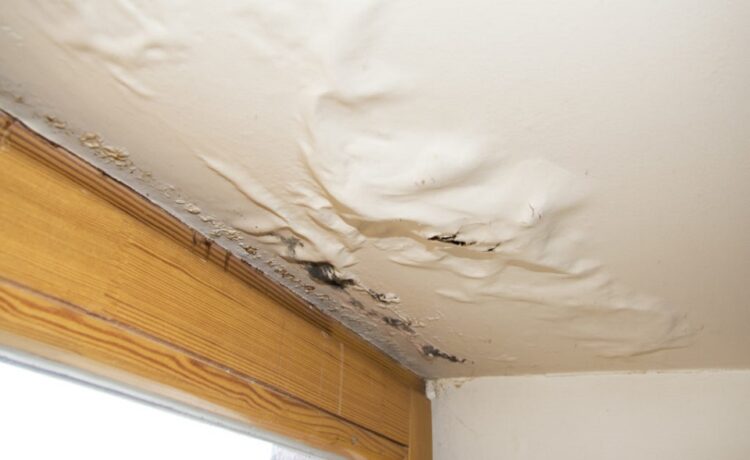Water damage is costly and can weaken the core of your home, requiring significant structural repairs and causing black mold and mildew. The best way to avoid water damage is through prevention, and these tips will help you do just that!
Many of these strategies are inexpensive, and they prevent water damage from the inside out. These easy, everyday fixes can save you from expensive disasters.
Keep Your Gutters Clean
Clogged gutters can lead to several water damage issues, including mildew, mold, and even structural problems.
Cleaning your gutters is one of the easiest things you can do to protect your home from water damage. It’s also relatively inexpensive and easy. Wear work boots and a sturdy ladder, and plan on making this a regular project each fall.
Overhanging trees drop leaves, sticks, and other debris year-round into the gutters; you’ll want to check them regularly for clogs. If you don’t want to handle the hassle of climbing a ladder, consider installing a gutter guard that prevents debris clogs.
Other home maintenance projects that will reduce the chance of water damage include resealing all caulking around sinks, bathtubs, and showers to keep moisture out. You should also examine appliance hoses and replace them if they’re old and brittle.
Check Your Water Heater
Water damage can have a devastating effect on a home. Even a tiny leak will soak into floors and walls, create mold, cause personal belongings to swell or warp, damage wiring, and leave behind stains and foul odors.
A leaking water heater can ruin your carpeting, rot the subfloor and stain your wall studs. Moreover, a major flood caused by a burst water heater or pipe can cost thousands of dollars in repairs and create unhealthy mold, mildew, and structural damage to your home.
A few easy strategies can prevent water damage before it occurs. Take action today or contact Restoration Company Denver to protect your home and avoid costly insurance claims. Ensure your gutters are not clogged, and test your sump pump regularly. Direct downspouts away from your home and periodically inspect for signs of water damage, such as a sagging foundation or damp wood that invites termites and carpenter ants.
Install A Leak Detection System
Fire may be a homeowner’s greatest fear, but water damage is the second most common home insurance claim. Whether due to clogged gutters, a burst water heater, or a split hose on an appliance, slow leaks often go undetected until they rot the house framing and subfloors.
An innovative water leak detection system can send notifications to your smartphone so that you can shut off the water and stop any potential disaster from developing. Some systems even have a built-in siren, making it easy to get notified of issues, such as puddles on the floor, even when you are miles away from home. Some even have additional sensors that monitor conditions like freezing pipes and humidity. A system such as this is the ideal way to keep your home safe from water damage.
Install A Backflow Prevention Device
Water that enters your home should only flow in one direction. Ideally, clean water enters, and dirty water exits. Occasionally, pressure changes in pipes or line breaks can cause backflow that contaminates clean water with chemicals and toxins. Backflow prevention devices help prevent this from happening.
Leaks can sometimes go unnoticed, especially in hard-to-reach places like crawl spaces, attics, or behind cabinets or appliances. Inspect these areas regularly for leaks, and remember that a high water bill may be the first sign of a hidden leak.
Wet materials like carpet, insulation, and furniture are a significant nuisance and expensive to repair. Moisture can cause these materials to shrink, warp, or mildew. Dry these items as soon as you notice any dampness to minimize damage.
Check Your Plumbing Lines
Water damage is one of the most destructive things that can happen to a home. Left unchecked, it will rot drywall and studs, create black mold and weaken major structural components such as joists and beams.
The good news is that most home water damage is caused by easy-to-fix problems that can be avoided with diligence and routine maintenance. By watching for the telltale signs of water damage, such as mildew smells or damp spots on walls and floors, you can quickly take care of any issues before they become full-blown emergencies.
Regularly check for leaks around sinks, toilets, appliances, and areas where two materials meet, such as tile and drywall. Also, check hoses on outdoor equipment such as washers and refrigerators, as they can develop leaks over time.






